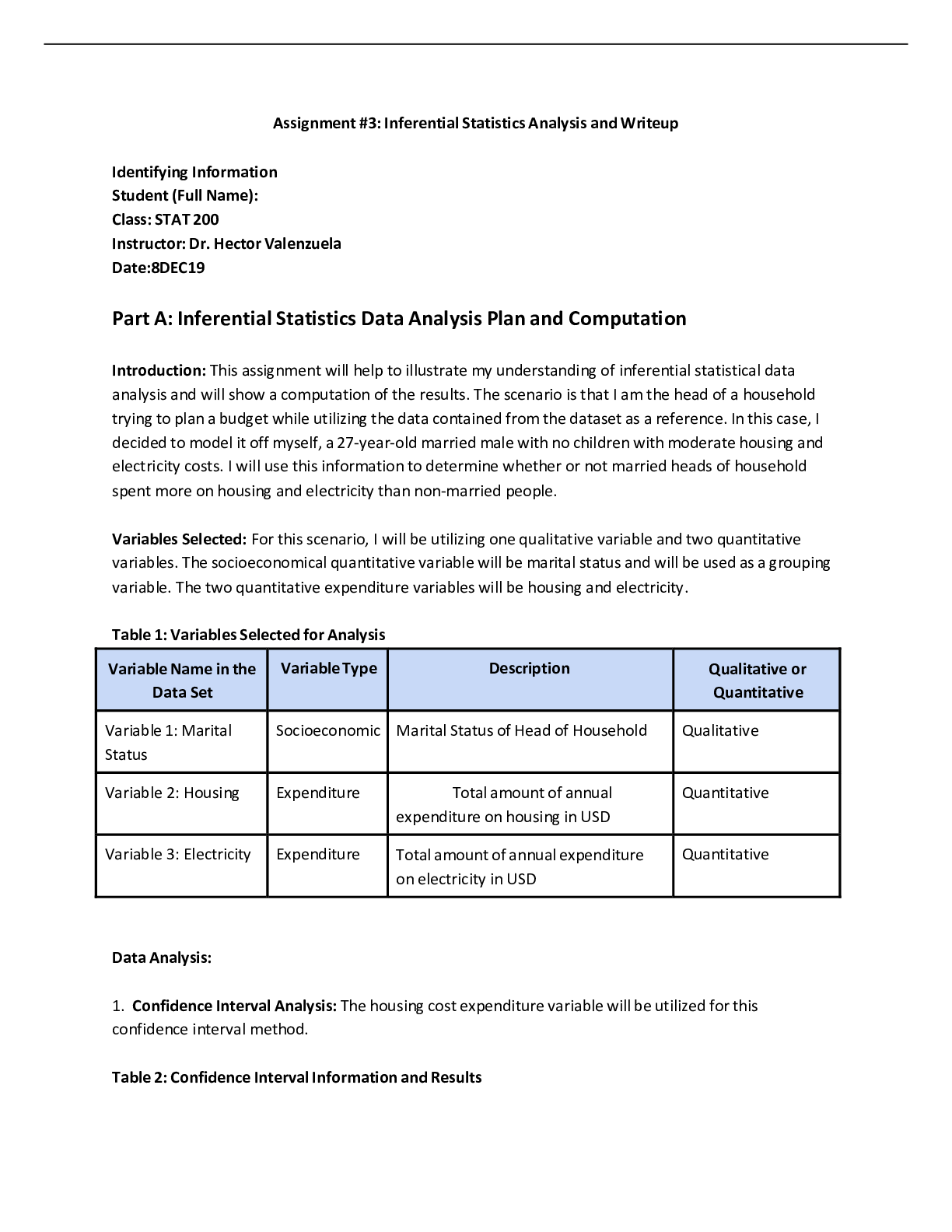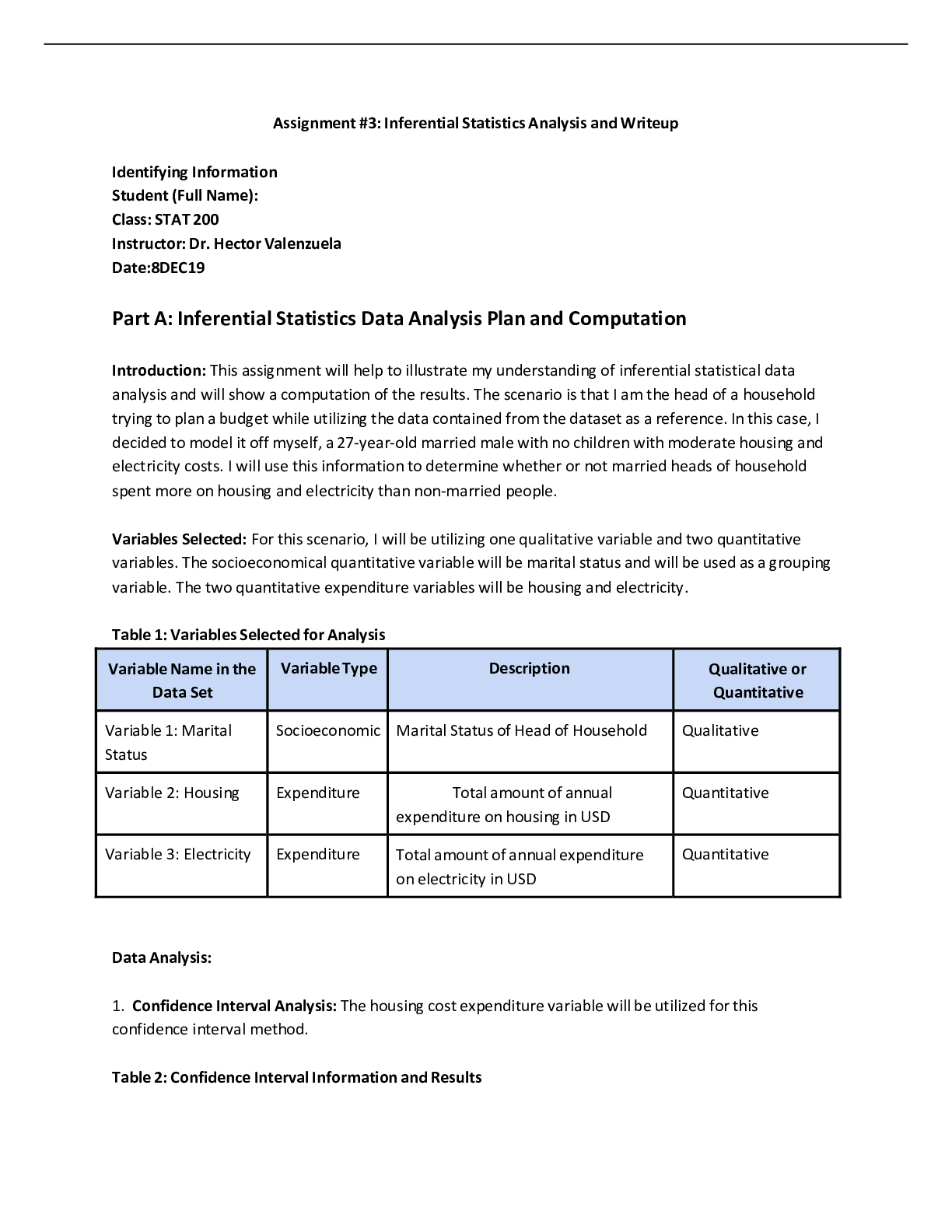Assignment #3: Inferential Statistics Analysis and Writeup Identifying
Course
Subject
Chemistry
Category
Report
Pages
9
Uploaded By
ATIPROS
Preview 2 out of 9 Pages


Download all 9 pages for $ 10.50
Reviews (0)
$10.50
